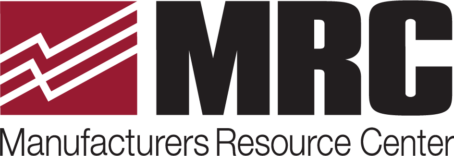 MRC’s Six Sigma courses go beyond traditional online training to deliver a truly immersive learning experience.
MRC’s Six Sigma courses go beyond traditional online training to deliver a truly immersive learning experience.
 Our approach bridges the gap between instruction and implementation, ensuring that you not only understand the Six Sigma methodology, but also know how to apply it to real-world projects.
Our approach bridges the gap between instruction and implementation, ensuring that you not only understand the Six Sigma methodology, but also know how to apply it to real-world projects.
We believe in driving real change through our courses, which is why we don’t rely on case studies alone. Instead, we empower you to select a Six Sigma project that will have a tangible impact on your organization. By successfully completing this project, you’ll be able to improve product quality, enhance customer service, and save your company money.
At MRC, we don’t just provide you with a course and then send you on your way. We’re committed to your success, which is why we offer project mentoring as part of our Six Sigma courses. You’ll receive four private, onsite mentoring meetings with our Master Black Belt, ensuring that you have the support and guidance you need to guarantee a return on investment on your first project.
Choose MRC for Six Sigma training that goes above and beyond, empowering you to make a real impact in your organization.
Yellow Belt Certification
MRC’s Yellow Belt Certification course is a process-focus to manage the business through the Six Sigma problem-solving approach of Define, Measure, Analyze, Improve, and Control (DMAIC). Yellow Belts are process improvement team members who have been exposed to the DMAIC Process and Tools.
Classroom training and exercises overview:
- Learn and apply DMAIC tools
- Utilize classroom exercises to demonstrate the application of tools
- Complete and pass exam on information and tools presented in YB training
YB Certification Requirements:
- Class Attendance
- Participation in Classroom and Group Exercises
- Pass Yellow Belt exam
Yellow Belt Training Topic Areas:
- Day 1: DEFINE:
Project Charter, SIPOC, Voice of Customer, Multi-level Pareto (Minitab Introduction)
- Days 1 & 2: MEASURE:
Six Sigma Metrics (card drop exercise), Basic Stats (Graphical Summary, Histogram, Dotplots, Boxplots, Time Series), Basic Tools (Process Map, Fishbone Diagram, XY Matrix, FMEA)
Common and Special Causes, Process Capability Analysis (catapult exercise),
MSA (Gage and Attribute R&R)
- Day 2: ANALYZE
Hypothesis Testing, Basic Tools – 1-Sample t, 2-Sample t, Paired t, 1Proportion, 2 Proportions, Power and Sample size
- Day 2: Intro to IMPROVE and CONTROL
Time Series and Control Charts, Control and Reaction Plan
MRC’s Six Sigma Yellow Belts are introduced to the DMAIC process. Participants create fishbone diagrams, control charts and graphs using Minitab’s statistical software, understand basic statistic measures and complete data demographics exercises. Process capability principles are reviewed using class exercises and analyzed in Minitab. A number of hypothesis testing methods are also included in the Yellow Belt training. Finally, control and reaction plans are examined to complete the course.
Green Belt Certification
MRC’s Six Sigma Green Belt is designed for individuals with little or no experience with Six Sigma methodologies, but it is no less impactful. This course is considered a “Dark Green” belt, emphasizing statistical tools to improve performance and make goals “stick.” Objectives include:
- Demonstrating the Design Measure Analyze Improve Control (DMAIC) methodology
- Documenting progress and results
- Selecting and applying tools
- Collecting and analyzing data
MRC’s Six Sigma Green Belt course consists of classroom and onsite mentoring sessions. Participants gain a comprehensive understanding of Six Sigma’s concepts, history, roles, implementation, and Green Belt statistical tools. Core parts of Six Sigma Green Belt Training are:
- Process flow charting
- Failure Mode Effects and Criticality Analysis (FEMEA)
- Distributions and Statistical Processes
- Control charts
- Inferential statistics
- Process capability
- Correlation and regression
- Measurement systems analysis (Gauge R&R)
- Analysis of variance (ANOVA)
- Goodness of fit testing
MRC’s Six Sigma Green Belts are able to create charts, process maps, and control plans to describe Six Sigma roles within an organization. They also learn to define Six Sigma projects and use Minitab® to run statistical tests for process improvement. Green Belt projects typically deliver $25,000~$50,000 in process improvement-driven cost savings.
Black Belt Certification
MRC’s Six Sigma Black Belt course consist of classroom and onsite mentoring sessions. The training initially runs simultaneously with our Green Belt class and focuses on Green Belt topics. Next we build on that foundation and expand to Black Belt material. This improves synergy within organizations by enabling individuals from the same company to attend the training together even though their experience may differ.
In addition to the Green Belt topics, the training focuses on:
- Advanced regression and Analysis of Variance (ANOVA)
- Advanced capability
- Designs of Experiment (DoE)
- Non-parametric distribution(s)
- Logistic regression
Program Description
- Process flow charting
- Inferential statistics
- Distributions and Statistical Processes Control charts
- Correlation and regression
- Multiple regression
- Process capability
- Goodness of fit testing
- Measurement systems analysis (Gauge R&R)
- Factorial Design
- Variability reduction using Designs of Experiment (DoE)
- Failure Mode Effects and Criticality Analysis (FMEA)
MRC’s Six Sigma Black Belts are able to explain multiple regression, perform factorial experiments, determine size calculations needed for experiments, and describe the different types of process optimization. Black Belt projects typically deliver $50,000~$100,000 in process improvement-driven cost savings.
These courses are ideal for senior-level decision makers, general managers, supervisors, group leaders, quality managers, and individuals from any discipline that wants to apply the Six Sigma methodology to eliminate waste, reduce inventory, improve processes, increase throughput, or improve bottom-line financial results.
Design for Six Sigma (DFSS)
Design for Six Sigma (DFSS) is the application of Six Sigma principles to the design of products and their manufacturing and support processes. It is used for product or process design in contrast with process improvement. Measurement is the most important part of most Six Sigma or DFSS tools, but whereas in Six Sigma measurements are made from an existing process, DFSS focuses on gaining a deep insight into customer needs and using these to inform every design decision and trade-off.
The Design for Six Sigma method has evolved from a core Six Sigma DMAIC approach to process improvement. DFSS is a collection of sophisticated tools that integrate with your existing product design processes, from concept to launch of production, focusing on achieving the nexus of flawless production, optimal product performance, and delighted customers at minimal cost.
The course consists of 2, 3-day sessions which take participants through a journey from capturing voice of the customer through concept development with techniques to predict product manufacturing capability and performance in the field. The second session is more analytical as it couples experimental design and statistical analysis methods for robust design with approaches to design for manufacturability and control systems to ensure optimal product performance and support ongoing continuous improvement. The course is interactive and hands-on; students will utilize Excel and Minitab statistical software to experience the core concepts.
Course Agenda:
Week 1:
- Introduction to DFSS
- Project Identification
- Project Chartering
- VOC (Voice of the Customer) gathering
- AHP (Analytical Hierarchy Processing)
- QFD (Quality Function Deployment)
- DFMEA (Design Failure Modes and Effects Analysis)
- Rolled Throughput Yield
- Product/Process Capability tracking
- Design Scorecards
- Taguchi Loss Function
- Hierarchical Decomposition
- Axiomatic Design
- DFM & DFx
- TRIZ
- Pugh Selection methods
Week 2:
- Classical DOE review
- Taguchi design and analysis methods
- TRIZ (Theory of Inventive Problem Solving)
- Design Validation
- Statistical Tolerancing
- Critical Parameter Management
- Capturing Lessons Learned
DFSS training is ideal for engineers, designers, interested managers and technicians- all those who would lead or be members of a DFSS project team.
Student Requirements: Students should be Black Belt or rigorously Green Belt trained. Engineering applications experience is helpful but not required. All students will need laptop computers with Minitab version.
SaveSave







 Our approach bridges the gap between instruction and implementation, ensuring that you not only understand the Six Sigma methodology, but also know how to apply it to real-world projects.
Our approach bridges the gap between instruction and implementation, ensuring that you not only understand the Six Sigma methodology, but also know how to apply it to real-world projects.